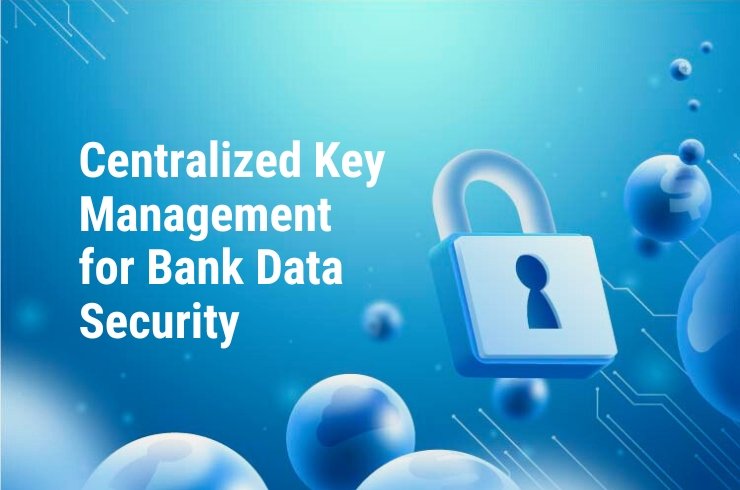Introduction: In today’s digital era, banks are increasingly leveraging cloud and multi-cloud environments to drive operational efficiency. However, the security and confidentiality of sensitive data must remain a top priority. This is where a centralized key management system (CKMS) comes into play. In line with the guidelines issued by Bank Negara Malaysia’s Risk Management in Technology (RMiT), it is crucial for banks to adopt a comprehensive and centralized approach to key management, including the use of a CKMS. In this article, we will explore the importance of implementing a CKMS in cloud and multi-cloud environments for banks. We’ll highlight key benefits such as automated key lifecycle management, HSM agnosticism, BYOK implementations, and support for multi-cloud platforms. To illustrate its significance, we’ll delve into practical use case examples showcasing how CKMS strengthens data security in banks.
- Data Security and Compliance: Banks handle highly sensitive information, including customer financial data and personally identifiable information (PII). By utilizing a CKMS, banks can effectively manage encryption keys to safeguard this data. Following the guidelines set by RMiT, a CKMS provides a comprehensive and centralized approach to key management, ensuring secure key generation, storage, and distribution. This fortifies data security and assists banks in meeting compliance requirements such as GDPR and PCI DSS.
- Authorization and compliance: RMiT sets Technology Risk Management stipulations that must be adhered to- one critical component of which is the definition of clear responsibilities for security personnel. The best and most practical approach would be using a Role Based Access Control CKMS that exhibits best practices such as dual-control and separation of duties
- Automated Key Lifecycle Management: A CKMS auto mates key lifecycle management, reducing the risk of human error and ensuring encryption keys are consistently updated. This aligns with the RMiT guidelines, which emphasize the need for a centralized approach to handle key generations in a secure and scalable manner. By adopting a CKMS, banks can efficiently manage key lifecycles, ensuring timely rotation and minimizing potential vulnerabilities.
- Extensibility: Extensibility is crucial for Certificate and Key Management Systems (CKMS) to provide a worthwhile return on investment, particularly in today’s challenging economic environment. CKMSs that offer integration points demonstrate their ability to justify and safeguard the investment made. They provide seamless integration with third-party systems, including SIEM, ServiceNow, Cryptographic platforms, and standard applications. This limitless integration capability ensures that the CKMS can adapt and extend its functionality as needed. Cryptographic Policy with Crypto-agility: A robust cryptographic policy is essential for utilizing cryptographic keys in compliance with industry standards and best practices. The RMiT guidelines emphasize the importance of financial institutions establishing such policies to ensure the proper use of cryptographic standards and algorithms. A CKMS that offers centralized control over key usage and associated algorithms empowers banks with crypto agility, enabling them to future-proof their operations to a significant extent.
- HSM Agnosticism: Hardware Security Modules (HSMs) play a critical role in strengthening encryption key security. RMiT guidelines underline the importance of a centralized key management system that can handle the storage and distribution of keys. A CKMS that is HSM agnostic provides banks with the flexibility to integrate with different HSM vendors. This allows for seamless key management across diverse HSMs while adhering to security standards.
- Bring Your Own Key (BYOK) Implementations: RMiT guidelines stress the need for a comprehensive key management approach, including secure key storage. BYOK implementations, supported by a CKMS, allow banks to generate and manage their encryption keys. The CKMS ensures secure key storage while facilitating the secure import of these keys into cloud environments. This empowers banks to maintain full control and ownership of their keys, as recommended by the guidelines.
- Support for Multi-Cloud Platforms: To optimize workloads and mitigate vendor lock-in risks, banks often adopt multi-cloud strategies. A CKMS that supports multiple cloud platforms, as highlighted by RMiT guidelines, enables consistent key management across different cloud environments. This ensures uniform data security measures, regardless of the specific cloud providers chosen for various services or applications.
Conclusion: As banks navigate the cloud adoption landscape, data security and compliance remain critical considerations. Following the guidelines set by Bank Negara Malaysia’s RMiT, a centralized key management system (CKMS) plays a pivotal role in safeguarding sensitive data. By implementing a CKMS that aligns with the comprehensive and centralized approach recommended by RMiT, banks can effectively manage encryption keys, automate key lifecycle management, support HSM agnosticism, facilitate BYOK implementations, and enable multi-cloud platform support. This empowers banks to enhance data security, meet regulatory requirements, and build trust with customers in an increasingly digital banking environment.


